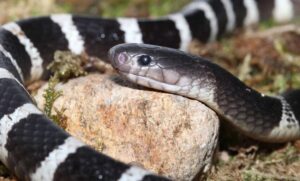Bears can survive in harsh environments and overpower some of the planet’s most formidable animals. Their strong build allows them to subdue prey. If you’re also interested, join KnowAllAnimals in exploring the Top 10 Largest Bear Species in the World in the following article!
1. Top 10 Largest Bear Species in the World – Meet the Biggest Bears on Earth
Bears are some of the largest and most powerful mammals on the planet. From the freezing Arctic to the forests of North America and Asia, bears possess a majesty and strength that makes them “giants” in the animal kingdom. In this article, we will explore the Top 10 Largest Bear Species in the World, including species that are comparable in size to gray wolves or even larger than tigers and lions.
1.1. Sloth Bear
- Kingdom: Animalia
- Phylum: Chordata
- Class: Mammalia
- Order: Carnivora
- Suborder: Caniformia
- Family: Ursidae
- Subfamily: Ursinae
- Genus: Melursus Meyer, 1793
- Species: M. ursinus
Smaller than brown and black bears, the Sloth Bear (Melursus ursinus) has a shaggy mane and sickle-shaped claws. Females typically weigh between 55 to 110 kg (121 to 243 lbs), while males average between 80 to 150 kg (176 to 331 lbs). However, some individuals have been recorded to weigh nearly 200 kg (441 lbs).
Sloth bears are native to the Indian subcontinent and are found throughout India, Sri Lanka, and Nepal. They are omnivores, primarily feeding on fruits, termites, and ants. The species often uses its long lower lip to suck up insects. Their curved claws are also perfect for digging into termite and ant mounds. Due to habitat loss, the IUCN has listed this species as vulnerable to extinction.
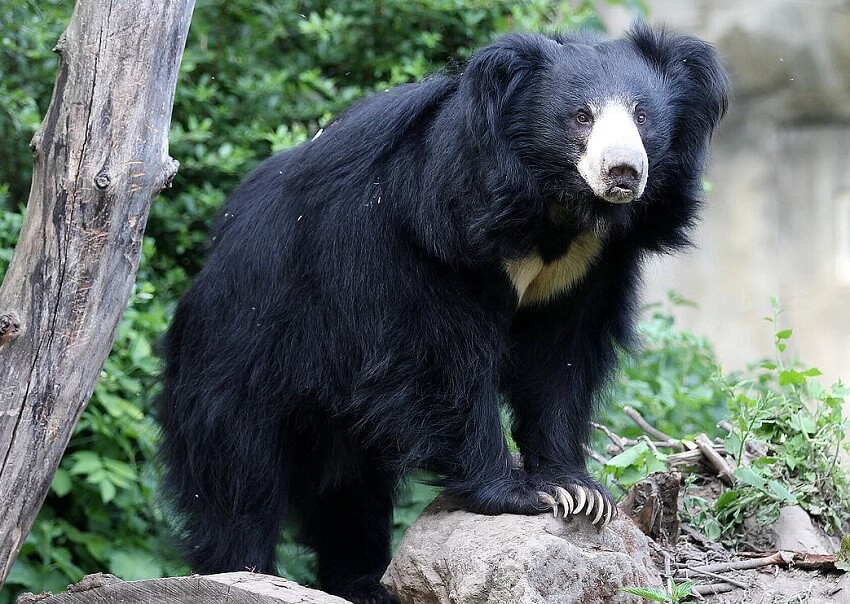
1.2. Asian Black Bear
- Kingdom: Animalia
- Phylum: Chordata
- Class: Mammalia
- Order: Carnivora
- Suborder: Caniformia
- Family: Ursidae
- Subfamily: Ursinae
- Genus: Ursus
- Species: U. thibetanus
Also known as the moon bear or white-chested bear, the Asian Black Bear (Ursus thibetanus) is most recognizable by the white V-shaped patch on its chest. They have a smaller and more slender body than brown bears. Male Asian black bears can weigh up to 200 kg (441 lbs), and females up to 125 kg (276 lbs).
Native to the Himalayas, this species is also found in various other habitats, including the Indian subcontinent, southern Iran, the Korean Peninsula, eastern Russia, northern Japan, and Taiwan. They often sleep in trees and hibernate in caves or hollow tree trunks. Their diet includes insects, fruits, nuts, mushrooms, honey, and grains. The IUCN currently lists the Asian black bear as vulnerable. Its main threats include habitat loss and poaching.
1.3. Andean Bear
- Kingdom: Animalia
- Phylum: Chordata
- Class: Mammalia
- Order: Carnivora
- Suborder: Caniformia
- Family: Ursidae
- Genus: Tremarctos
- Species: T. ornatus
With the scientific name Tremarctos ornatus, this is the last surviving short-faced bear species in the world. Also known as the Andean or mountain bear, these bears have light-colored patches on their faces and chests.
The Andean Bear is the only bear species native to South America. Their range extends from Venezuela to Colombia, Ecuador, Peru, Bolivia, and Argentina. However, they are almost exclusively found in the Andes Mountains. Like black bears and sun bears, this species spends most of its time in trees. Their diet includes cacti, nuts, bamboo hearts, fruits, and palm leaves, but they sometimes hunt deer, llamas, livestock, and small rodents for additional nutrition.
1.4. American Black Bear
- Kingdom: Animalia
- Phylum: Chordata
- Class: Mammalia
- Order: Carnivora
- Suborder: Caniformia
- Family: Ursidae
- Subfamily: Ursinae
- Genus: Ursus
- Species: U. americanus
The American Black Bear (Ursus americanus) is the smallest and most common bear species in North America. Adult males can weigh up to 300 kg (661 lbs), while adult females weigh up to 79 kg (174 lbs).
Despite their name, their fur can also be brown or even blonde. They are found throughout the northwestern and northeastern United States, around the Great Lakes region, and across Canada into Alaska. American black bears primarily feed on insects, white-tailed deer, moose, fawns, and fish.
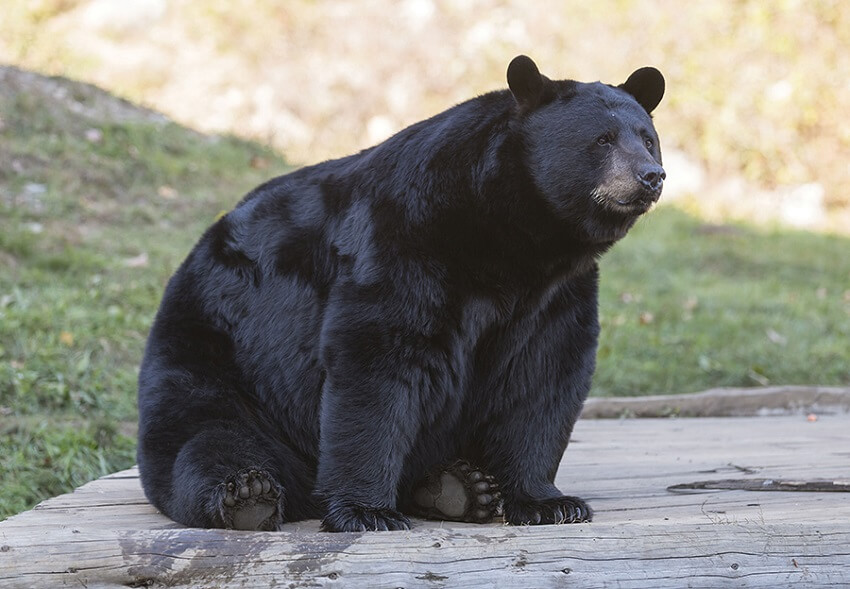
1.5. Eurasian Brown Bear
- Kingdom: Animalia
- Phylum: Chordata
- Class: Mammalia
- Order: Carnivora
- Suborder: Caniformia
- Family: Ursidae
- Subfamily: Ursinae
- Genus: Ursus
- Species: U. arctos
- Subspecies: U. a. arctos
Also known as the European brown bear or common bear, the Eurasian Brown Bear (Ursus arctos arctos) is one of the most common subspecies of brown bears. As adults, they can weigh between 260 to 360 kg (573 to 794 lbs).
Eurasian brown bears once existed across the Eurasian continent. Today, their range is mainly limited to northern and eastern Europe, Russia, the Baltic states, and the Balkans. However, isolated populations still exist in Spain, Italy, France, Southwest Asia, China, and Japan. Their diet includes roots, berries, nuts, insects, and fish. They are also known to attack livestock and hunt large and small mammals.
1.6. Grizzly Bear
- Kingdom: Animalia
- Phylum: Chordata
- Class: Mammalia
- Order: Carnivora
- Suborder: Caniformia
- Family: Ursidae
- Subfamily: Ursinae
- Genus: Ursus
- Species: U. arctos
- Subspecies: U. a. horribilis
One of the most famous subspecies of the brown bear is the Grizzly Bear (Ursus arctos horribilis), which can weigh nearly 300 kg (661 lbs).
Historically, the grizzly’s territory spanned most of North America. Today, their range is limited to the northwestern United States, Alaska, and western and northern Canada. This species often preys on large animals, including moose, deer, bison, and caribou. Populations with access to salmon and other fish can grow to be especially large, such as the grizzlies in Alaska and British Columbia. The IUCN lists the grizzly bear as threatened in the contiguous United States and endangered in Canada.
1.7. Ussuri Brown Bear
- Kingdom: Animalia
- Phylum: Chordata
- Class: Mammalia
- Order: Carnivora
- Suborder: Caniformia
- Family: Ursidae
- Subfamily: Ursinae
- Genus: Ursus
- Species: U. arctos
- Subspecies: U. a. lasiotus
A close relative of the Eurasian brown bear, the Ussuri Brown Bear (Ursus arctos lasiotus) is also known as the black grizzly or Ezo brown bear. Its appearance is similar to the Kamchatka brown bear, though it has a narrower skull and a shorter forehead. Adult males can weigh from 400-550 kg (882-1,213 lbs), with females typically being smaller.
Ussuri brown bears primarily live in eastern Russia and its surrounding islands, the Korean Peninsula, northeastern China, and northern Japan. Their diet mainly consists of plants, grass shoots, sap, nuts, and berries. However, they will also hunt and consume small mammals, birds, fish, and insects. Depending on the region, Ussuri brown bear populations can be listed as either stable or threatened.
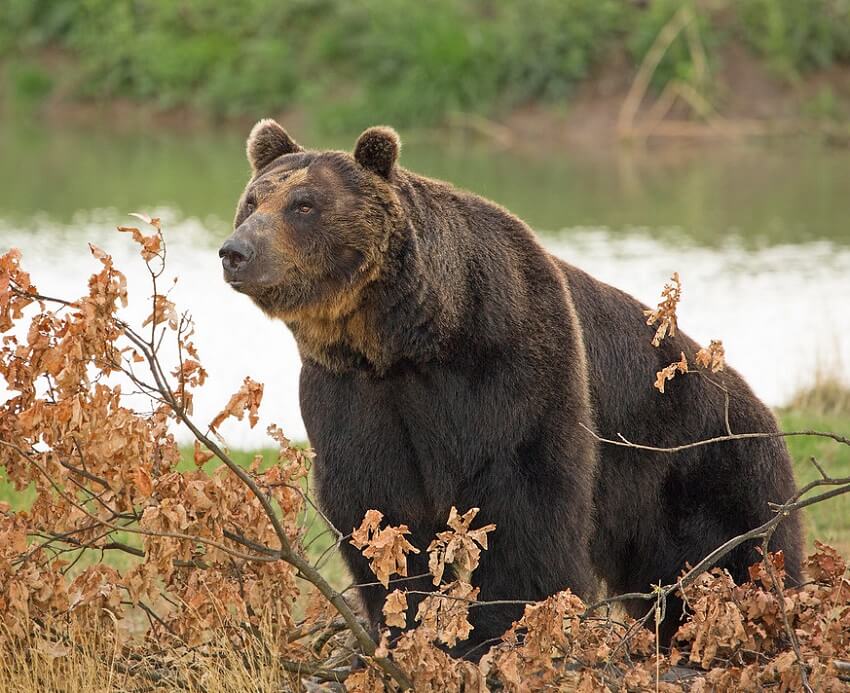
1.8. Kamchatka Brown Bear
- Kingdom: Animalia
- Phylum: Chordata
- Class: Mammalia
- Order: Carnivora
- Suborder: Caniformia
- Family: Ursidae
- Subfamily: Ursinae
- Genus: Ursus
- Species: U. arctos
- Subspecies: U. a. beringianus
The Kamchatka Brown Bear (Ursus arctos beringianus) is the largest brown bear subspecies in Eurasia. The heaviest Kamchatka brown bears can weigh up to 650 kg (1,433 lbs), although the average weight of the species varies seasonally.
The Kamchatka brown bear is named after the Kamchatka Peninsula, where the species primarily lives. However, it also lives on Karaginsky Island, the Kuril Islands, the Shantar Islands, and St. Lawrence Island. Their diet mainly consists of berries, nuts, salmon, and marine mammals. It’s estimated that there are about 10,000 to 15,000 Kamchatka brown bears in the wild.
1.9. Kodiak Bear
- Kingdom: Animalia
- Phylum: Chordata
- Class: Mammalia
- Order: Carnivora
- Suborder: Caniformia
- Family: Ursidae
- Subfamily: Ursinae
- Genus: Ursus
- Species: U. arctos
- Subspecies: U. a. middendorffi
The largest subspecies of brown bear, the Kodiak Bear (Ursus arctos middendorffi), also known as the Alaskan brown bear, has a similar appearance to other brown bears. Its most notable feature is its immense size, with the largest recorded individual in the wild weighing nearly 800 kg (1,764 lbs).
Kodiak bears are native to the Kodiak Archipelago. This archipelago is the only place in the world where Kodiak bears live, and it is also the origin of their name. Their diet includes a wide variety of local foods, including berries, seaweed, beach invertebrates, and salmon.
1.10. Polar Bear
- Kingdom: Animalia
- Phylum: Chordata
- Class: Mammalia
- Order: Carnivora
- Suborder: Caniformia
- Family: Ursidae
- Subfamily: Ursinae
- Genus: Ursus
- Species: U. maritimus
The Polar Bear (Ursus maritimus) is the largest bear species in the world and the largest terrestrial carnivore on our planet. Adult males weigh from 400-800 kg (882-1,764 lbs), while females weigh from 200-300 kg (441-661 lbs).
Polar bears live in the Arctic Circle but also roam throughout the northern regions of Greenland, Canada, Russia, Alaska, and Norway. Their scientific name means “sea bear,” which refers to their ability to swim long distances in icy water. Their diet is primarily seals, but they also eat walruses, small whales, and fish. The global population of polar bears is estimated to be between 20,000 and 30,000. Due to the threat of climate change, pollution, and other human impacts, the IUCN has listed the polar bear as vulnerable.
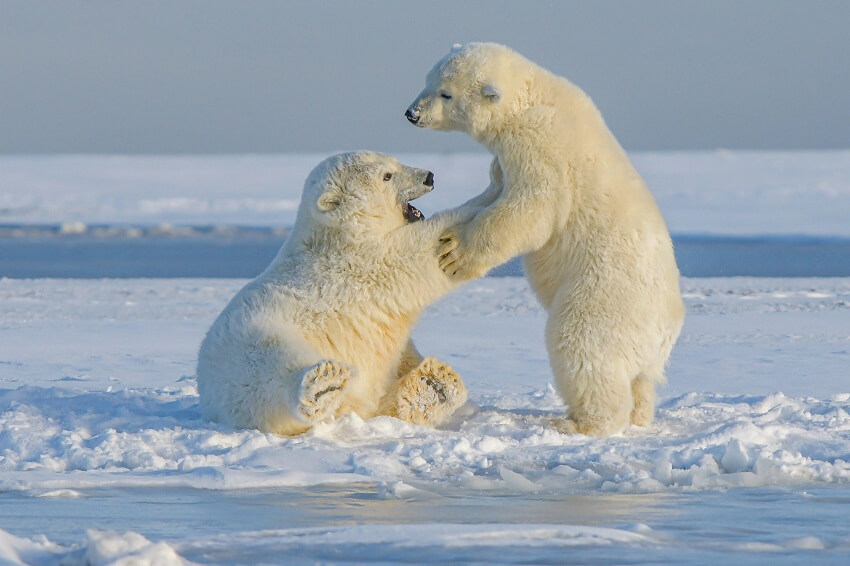
2. FAQs
1. What is the largest bear species in the world today?
The Polar Bear is considered the largest bear species, with adult males able to weigh over 800 kg (1,764 lbs).
2. Which is larger: the Kodiak bear or the polar bear?
Both species are massive, but the Polar Bear is typically slightly taller and heavier than the Kodiak bear.
3. Is the Grizzly bear the largest bear species in North America?
No. While large, the Grizzly is still smaller than the Kodiak bear and the polar bear.
4. What is the smallest bear species in the bear family?
That would be the Sun Bear, the smallest bear in the world, which typically only weighs 25–65 kg (55–143 lbs).
5. Are large bears dangerous to humans?
Most bears avoid humans, but when threatened or hungry, some species like the grizzly or polar bear can attack.
3. Conclusion
Giant bear species not only demonstrate incredible strength but also play a vital role in global ecosystems. Learning about the Largest Bear Species in the World with Know All Animals helps us better appreciate their wild beauty and become more aware of the importance of conserving their habitats. Bears are not just symbols of power; they are a testament to the stunning diversity of nature.



